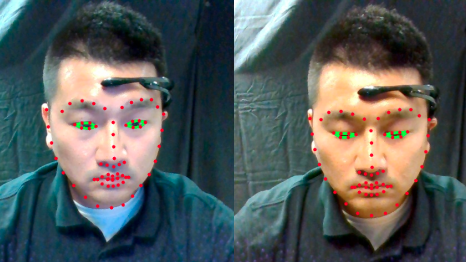A new paper from the SMART Lab research group, headed by Computer and Information Technology (CIT) professor Byung-Cheol “BC” Min, has just been published. This paper, co-first authored by Ruiqi Wang (a current PhD student in CIT) and Wonse Jo (a PhD graduate from CIT), featured the development of a new type of transformer that can better track the state of human operators as they interact with robots.
Min’s research group defines two types of emotional states that affect how a person works alongside a robot—physiological and behavioral. They have combined four different data-collection methods that allow a mixed team of robots and humans to moderate the state of the people on the team, which they collectively call the “Husformer” (named as such because it functions as a transformer for “human states”).
The four methods used in tandem by the Husformer are the EEG (or electroencephalogram, which measures brain activity), the EMG (or electromyography, which measures electrical response in the muscles), the GSR (galvanic skin response, which measures electrical response on the skin) and also the frequency of eye-blinking.

Information from these four sources can be recombined in innovative ways that advance human-robot teams’ current ability to track the status of their human operators.
“I am thrilled that our research on human state recognition has been published," Wang said. "I hope this dissemination of knowledge will benefit the respective scientific community and contribute to advancements in relevant research and technology.”
Experimental results on benchmark datasets show its superiority over other state-of-the-art models and single-modality approaches. They suggest future work should focus on integrating contextual information, improving robustness against missing data, and addressing challenges posed by highly unbalanced datasets. Additionally, they anticipate incorporating multi-task learning to predict and analyze multiple dimensions of human states simultaneously.
Additional information
- BC Min’s SMART Lab
- Original publication of Husformer paper (IEEE)
- SMART Lab to have standout presence at leading robotics conference (Purdue Polytechnic newsroom)
- SMART Lab introduces area high schoolers to robotics (Purdue Polytechnic newsroom)
